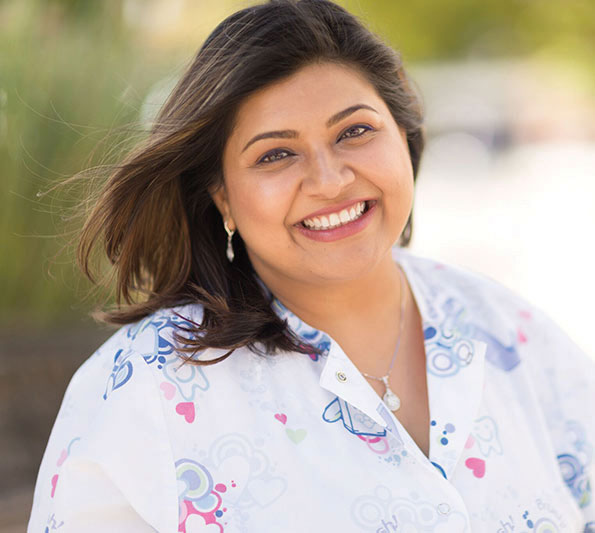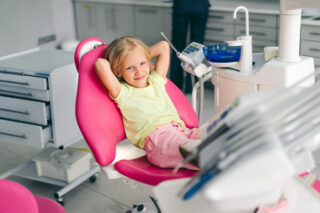
More Dental Health Articles
What Is the Difference Between a Pediatric Dentist and a General Dentist?

Children are different than adults, and can often be agitated or upset that Mom or Dad has to take them to the dentist. It can be a scary thing to visit a general dentist’s office where the atmosphere is quiet and subdued and does not cater to children. Instead, parents are turning to pediatric dentists, sometimes called the “pediatricians of dentistry.”
Here are just some of the ways a pediatric dental practice differs:
The Environment Is Different
Most modern general dentistry offices are set up to create a calm and soothing, quiet spa-like atmosphere, while a modern pediatric dental office is colorful and bright, has upbeat music to set a happy, fun loving tone.
It also offers distractions/enter-tainment for children including a children’s reception area. A play area and a theatre area for watching movies offers ways to engage children who are patients accompanying siblings. Children often have iPads and TVs at each dental chair, and there is a toy car in the dental cleaning bay which serves as a low-threat way to start the appointment.
The Staff Interaction and Feel Is Different
In a general dentist’s office, the staff interaction is professional and terminology is straightforward, while in a pediatric office, the staff interacts with young patients in a playful manner, and use language to help relax children.
Instead of the term “suction tube,” we use “Mr. Thirsty,” the water laser is called the “rain brush,” and the handpiece drill is referred to as “Mr. Bumpy.” The “x-ray unit” is a “camera” and the “lead apron” is a “blanket.” Conversation is focused on Disney and tween movie characters, or school sports and afterschool activities, rather than world news. Counting and nursery songs help the exam go by quickly and pleasantly.
Training and Expertise Are Different
A general dentist’s skill and expertise is focused on management of permanent teeth anatomy and treatment. The pediatric dentist has 2-3 years of additional specialized training when it comes to management of pediatric (primary) teeth, proper sequence of teething, child psychology and cooperation techniques, as well as caring for patients with medical and/or behavioral special needs.
The Technology Is Different
Besides the ever-popular elec-tronic devices children use, equipment used for dental appointments differs in a pediatric dental practice. It includes digital x-ray imaging (reduces the radiation up to 90%), specially-sized equipment such as the pediatric-sized x-ray sensors and small brush head-sized intra-oral camera. These allow us to educate parents and monitor cavity-susceptible areas more comfortably on a computer screen rather than inside little mouths.
Topical gel and laser technology reduces or eliminates the need for a local anesthetic shot, so children can avoid the discomfort of numb lips, cheeks and tongues. They can return to normal activity – play or school – immediately after cavity fillings.
Other Articles You May Find of Interest...
- Let’s Smile Dental’s 7&Up Club
- Strengthening Smiles: Understanding the Importance of Splinting Periodontally Involved Teeth
- Understanding Soft Tissue Grafting: A Key To Periodontal Health
- New Solutions for Dentures and Dental Implants
- Benefits Of Immediate Dental Implants
- Preventing Tooth Injuries During Your Child’s Active Summer
- How New Tech In the Dental Office Benefits You

















